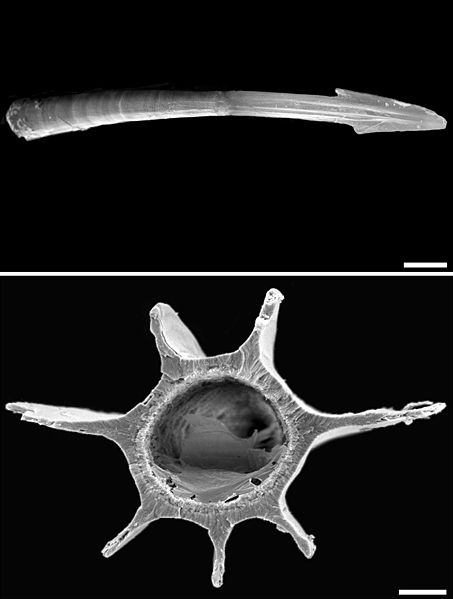A love dart is a hard, long, sharp, calcareous or chitinous dart which some hermaphroditic land snails and slugs create. Darts are quite large compared to the size of the animal: in the case of the semi slug genus Parmarion, the length of a dart may be up to one fifth that of the semi slug’s foot.[1]
Prior to copulation, each of the two snails (or slugs) attempt to “shoot” one or more darts into the other snail (or slug). There is no organ to receive the dart; this action is more analogous to a stabbing, or to being shot with an arrow. The dart does not fly through the air to reach its target however; instead it is fired as a contact shot.
The love dart is emphatically not a penial stylet (in other words this is not an accessory organ for sperm transfer). The exchange of sperm between both of the two land snails is a completely separate part of the mating progression. Nevertheless, recent research shows that use of the dart can strongly favor the reproductive outcome for the snail who is able to lodge a dart first in its partner.
Mating begins with a courting ritual. The two snails circle around each other for up to six hours, touching with their tentacles, and biting lips and the area of the genital pore, which shows some preliminary signs of the eversion of the penis. As the snails approach mating, hydraulic pressure builds up in the blood sinus surrounding the organ housing the dart. Each snail manoeuvres to get its genital pore in the best position, close to the other snail’s body. Then, when the body of one snail touches the other snail’s genital pore, it triggers the firing of the dart.[2]
The darting can sometimes be so forceful that the dart ends up buried in the internal organs.[3] It can also happen that a dart will pierce the body or head entirely, and protrude on the other side.[4]
After both snails have fired their darts, the snails copulate and exchange sperm.
The dart is shot with some variation in force, and with considerable inaccuracy, such that one-third of the darts that are fired in Helix aspersa either fail to penetrate the skin, or miss the target altogether. [7] Snails have only very simple visual systems and cannot see well enough to use vision to help aim the darts.
Although the existence and use of love darts in snails has been known for at least several centuries, until recently the actual function of love darts was not properly understood.
It was long assumed that the darts had some sort of “stimulating” function, and served to make copulation more likely. It was also suggested that darts might be a “gift” of calcium. These theories have proved not to be accurate; recent research has led to a better understanding of the strange phenomenon of love darts.
-http://en.wikipedia.org/wiki/Love_dart



